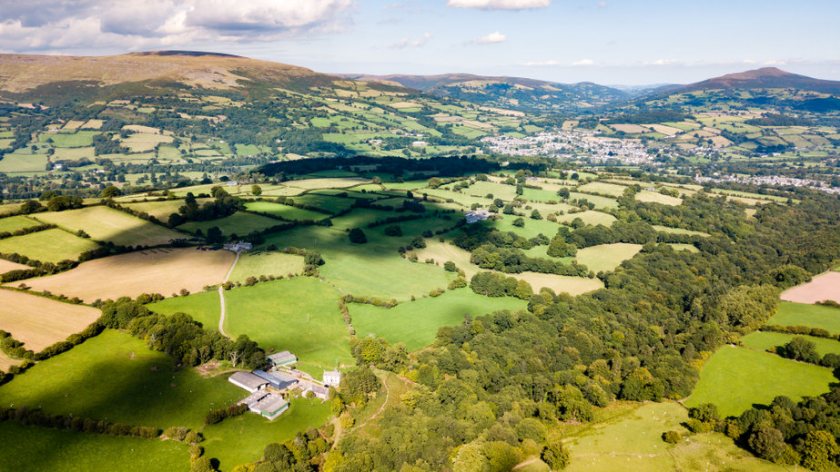
When it comes to undertaking forestry operations in a previously unmanaged woodland, many farmers and landowners understandably fear the consequences of getting it wrong.
The key to getting it right, suggests H&H Land & Estates Environmental & Woodland Advisor, Will Livesey, is in the preparation, permissions, and picking the right contractor.
Whatever the nature of forestry operations you are considering, from single tree felling and extraction through to whole-scale clear-felling and restocking, it goes without saying that the appropriate permissions and or licenses must be in place before any works take place.
From January 1 this year the penalties for failing to get the right permission have risen significantly.
Illegal felling in England can now be punished with unlimited fines and potential custodial sentences, replacing the Forestry Act 1967 penalty of £2,500, or twice the value of the felled timber.
Many are also wary of the potential costs of significant ground impact and environmental degradation which can occur from poorly undertaken forestry operations.
Assessing this risk accurately is a key part of planning, which plays an important part in determining the scale of your operation and how you approach it.
For example, is it more effective to undertake a single clearfell, generating an operating surplus to help cover remedial works following the operation?
Or conduct two smaller operations with smaller equipment and associated higher operating costs, but a lower potential for ground impact?
Once you’ve identified the appropriate scale of the operation, and have the necessary permissions in place, it is time to start looking for contractors.
Your choice ranges from the highly productive, larger scale contractors such as Euroforest Ltd, through to a myriad of ‘one man’ bands.
In between these extremes you’ll find operators of every size with every conceivable size and type of equipment, including small and large tractors and trailers, purpose built mini-forwarders, and even specialist horse-loggers.
Searching online might lead you to the individual or team you need, and some have a presence on social media, however many good contractors gain most of their business from the recommendations of previous customers.
A simple way to find a good contractor is to have a look at a neighbour’s woodland or nearby forestry operations.
Any contractor you consider must hold the many certificates and competencies required for forestry operations, ranging from the initial CS30//31 (Chainsaw maintenance, crosscutting and felling of small trees- up to 380mm), all the way to FMOC (Forest Machine Operators Certificate) for Harvesters/Forwarders.
They must also be able to demonstrate that adequate insurances are in place, and that cover is compliant with current legislation.
Recent changes in the rules, mean that it is no longer acceptable to have several chainsaw operators in a contractor’s team, all under their own individual insurances.
There must be a designated ‘employer’, who holds employers’ liability for the whole group. As a rule, I would recommend a minimum £5m Public Liability cover in areas of low public access and potential for damage to property, rising to £10m+ for tree surgery operations in proximity to buildings with a higher risk of damage to people and property.
Once a contractor has been identified, the next discussion is on pricing, availability and timing.
Pricing tends to be on either a ‘day-rate’, or price per tonne, and both have positive and negative points. As a rule, the larger the contractor’s operation, the more likely they are to work on a price per tonne rate.
Weigh bridge tickets are generally used to calculate a tonnage rate, though some harvesting machinery can record meters cubed (m3) harvested, which should give an accurate indication of how the operation is going.
Timing of forestry operations is often the main point of contention, as there is a greater potential for significant ground disturbance if undertaken without proper forethought.
It is possible to fell trees all year round, from a forestry perspective, but requirements such as nesting birds, ecological checks and compliance with BPS and Stewardship schemes may impose restrictions.
Some operations, such as the selective felling of Ash, Beech and Sycamore for high quality logs can only take place between December and February when there is minimal sap in the tree, which can lead to staining.
Other operations, or where the timber’s aesthetic quality isn’t the highest priority can take place throughout the year.
Once you have agreed a reasonable price for the works and planned date for your forestry, the last step is to plan what to do upon completion of the job and what to do if everything goes sideways.
A good emergency plan, covering all the bases from major incidents through to alternative routes in adverse weather, can prove the difference between a successful outcome or a costly failure.
Relationships are key, so do make sure you build upon a successful relationship. If the contractor works well and does a decent job, plan them in for future works.
It is often a great help for you and the contractors if they can schedule your work months or even years in advance.
I have often found that a day’s wander through the woods with the contractor and agent can lead to a long and profitable relationship for all parties, that is a relationship without the anxieties and uncertainties outlined.
